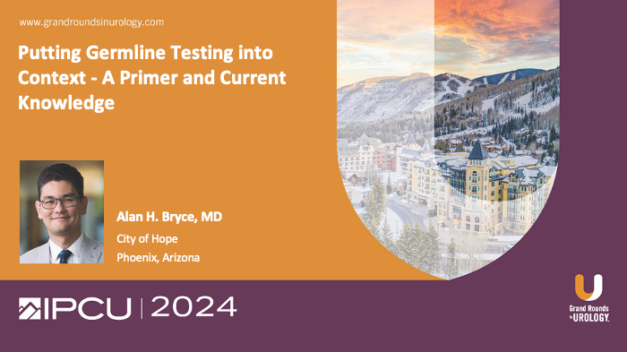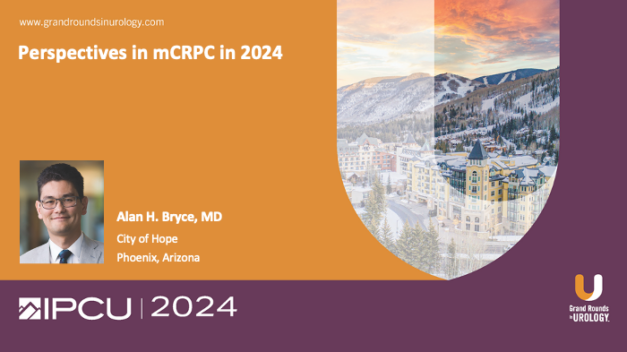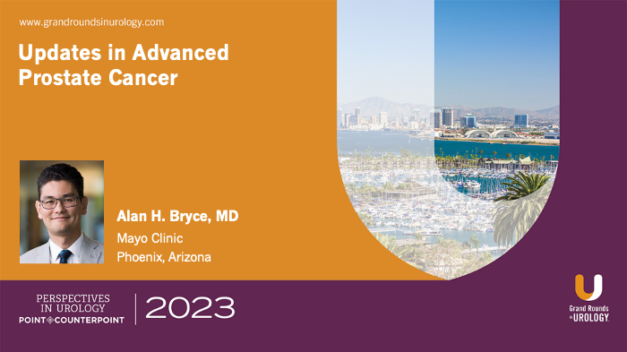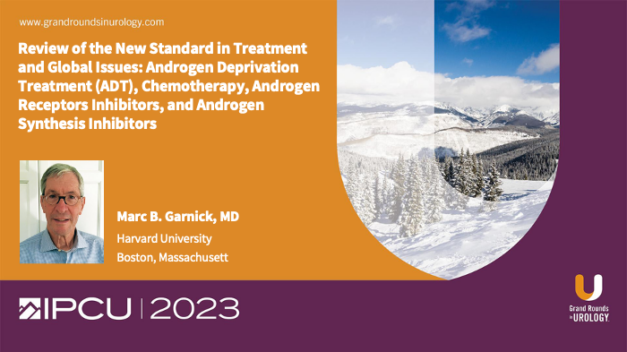Putting Germline Testing into Context – A Primer and Current Knowledge
Alan H. Bryce, MD, outlines the current state and potential future directions of germline testing in prostate cancer detection and treatment. He begins with a review of the currently known genetic mutations associated with prostate cancer.
Dr. Bryce then reviews the NCCN criteria for germline genetic testing for patients with new or previously diagnosed prostate cancer. He presents data that supports the idea that current testing guidelines are not effective in identifying the presence of known pathogenic germline variants (PVGs) in patients with prostate cancer.
Dr. Bryce then examines the relationship between disease progression and the presence of PVGs. He presents data illustrating the correlation of certain PVGs and the likelihood of disease progression.
Dr. Bryce concludes by highlighting the lack of available data for different racial groups. He notes that most of the available PGV data is based on the testing and surveillance of Caucasian males, leaving all other racial groups underrepresented in the data.
Read More



